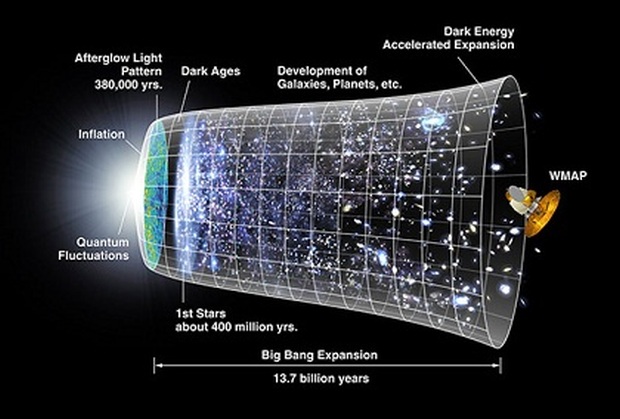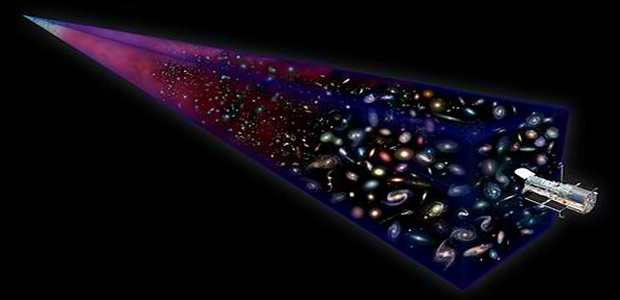The age of the universe has been found to be 13.8 billion years. Over the past century, astronomers have deduced several ways to estimate the age of the universe. At the dawn of this century, the universe’s age remained far from certain. But the launch of the Wilkinson Microwave Anisotropy Probe (WMAP) changed all that. Still, astronomers’ attempts during the previous century to narrow the age estimates makes for a fascinating detective story. Before WMAP, the best approach for determining the universe’s age used the much-debated Hubble constant, a figure that describes the rate at which the universe is expanding.
To find the Hubble constant, astronomers observe distant galaxies and measure their distances (by using Cepheid variable stars or other objects of known intrinsic brightness) as well as how fast they recede from Earth. They then determine the Hubble constant by dividing the galaxy’s speed of recession by its distance. Once they decide on a value for the Hubble constant, they can determine the age of the universe by calculating the constant’s reciprocal. But there was a problem. The values astronomers got for the Hubble constant depend on various assumptions about the universe’s density and composition and the method used to determine distances.

So, astronomers of different mindsets got different values for the constant. They generally divided into two camps, one in the range of 50 kilometers/second/megaparsec, and the other up at 80 km/sec/ Mpc. (A megaparsec equals 3.26 million light-years, or about 20 billion billion miles.) Therefore, the two groups estimated a range for the age of the universe of about 10 to 16 billion years. (The higher values of the Hubble constant produce younger age values for the universe.) Research by various groups, including Wendy Freedman and her colleagues in the Key Project — astronomers who were using the Hubble Space Telescope to measure the distances to many galaxies — narrowed in on a value toward the younger end of the scale. But uncertainties remained.
The other series of approaches to determine the universe’s age attempted to measure directly the ages of the oldest objects in the universe. Astronomers can estimate the universe’s age by measuring the decay of radioactive elements. This precisely measures the ages of the oldest rocks on Earth at 3.8 billion years and the oldest meteorites at 4.6 billion years, dating the solar system. Applying this technique to gas in the Milky Way or to old stars is less precise, however, due to assumptions about the primordial abundances of various isotopes. The large windows for error in these calculations pointed to an age of the universe of 12 to 15 billion years, plus or minus 3 to 4 billion years.

Measuring the ages of ancient star clusters offered another avenue. By looking at the most luminous stars in a globular cluster, astronomers can fix an upper limit for the cluster’s age. They look at the brightest stars on the socalled main sequence, the primary track on a plot of stars’ brightnesses versus their temperatures. Such studies of many globulars, based on refined distance measurements provided by the European Space Agency’s hipparcos satellite, suggested an age for many of the oldest stars of about 12 billion years. And astronomers think the age of globulars gives a pretty good indication for the age of the universe. That’s because globulars contain hardly any heavy elements, and so had to be among the first objects to form.
Alternatively, astronomers measured the ages of white dwarf stars, the shrunken remnants of stars that are as heavy as the Sun but only as large as Earth. By finding the faintest, and thus oldest, white dwarfs, astronomers estimated how long they have been cooling. Comprehensive attempts at cataloging white dwarfs and measuring their ages yielded about 10 billion years for the age of the Milky Way’s disk. The galaxy’s disk formed about 2 billion years after the Big Bang, yielding an age of the universe of about 12 billion years.
The discrepancies disappeared with the release of WMAP data in 2003. By carefully examining the microwave background radiation, astronomers were able to pin down the universe’s age to 13.8 billion years, accurate to 1 percent. The result pretty much ended the debate, but what a debate it was.
-end-


































